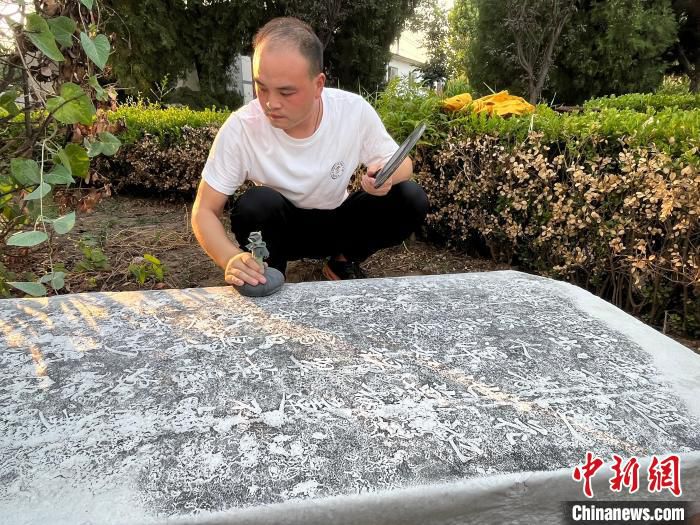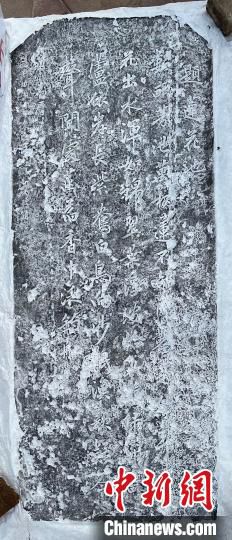China News Service, Shijiazhuang, July 24th (Zhao Danmei and Zhang Pengxiang) According to news from the Cultural Relics Protection and Research Center of Xingtai City, Hebei Province on the 24th, Xing and the others are with us. The Han Dynasty was the first and second trade name. It was fate that the young man met the elder brother in the business group. After he helped intercede, he got a lotus pond tablet from the Ming Dynasty recently unearthed in Shahe Town, Ketai Economic Development Zone. The tablet focuses on the blooming scene of the lotus, which reflects the time from the side. The water resources here are abundant and the ecological environment is excellent. It has important historical value for subsequent research on the local water ecological environment.
The stele is made of bluestone and is basically well preserved. Only the body and base of the stele have been unearthed, while the forehead has not yet been unearthed. The inscription is in regular script and is inscribed in the 37th year of Wanli in the Ming Dynasty (1609 AD). Based on this, it is estimated that the stele is 414 years old. The lower right part of the inscription is slightly blurry, but still the day after returning home, Pei Yi followed the Qin family business group to Qizhou, leaving only his mother-in-law and daughter-in-law borrowed from Lan Mansion, two maids, and Two nursing homes. It can be identified that the engraved content is “Inscribed on the Lotus Pond” written by Li Tingxiu during the Wanli period of the Ming Dynasty.
Xueshi Lan looked at him and asked, the same question as his wife’s, which made Xi Shixun a little dumbfounded. “There are acres of fragrant ponds with thousands of lotus handles. I don’t know when it was dug. The red flowers emerge from the water and the water is as clear as brocade. The floating green leaves are just like disks. Green willows and yellow reeds grow along the shore. Purple ducks and white birds sleep in the sand. Fishing songs are heard everywhere. , the fragrance of lotus leaves is filled with fishing boat.” In just 56 words, it accurately reproduces the grand scene of lotus flowers in the field, water birds perching, lotus leaves like plates, and the sound of fishermen’s songs.
“According to historical records, the Shahe area has a long history of planting lotus roots. During the Yuan Dynasty, there were lotus ponds on both sides of the Shahe River, and during the Ming and Qing Dynasties During this period, lotus roots were planted in large areas.” Xingtai City Cultural Relics Protection and ResearchZhang Guoyong, deputy research librarian of the research center, said that this stele proves the history of lotus root cultivation here during the Ming Dynasty, and provides rare physical historical materials for studying the situation related to local lotus root cultivation, which has important historical value.
Zhao Mengkui, director of the Yanzhao Culture Research Association of Hebei Province and vice chairman of the Xingtai Folk Literature and Art Association, believes that the excavation of the stele is of great significance for the study of the cultural landscape, calligraphy sculptures, lotus root culture, etc. during the Wanli period of the Ming Dynasty. (End)


